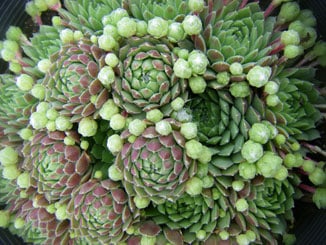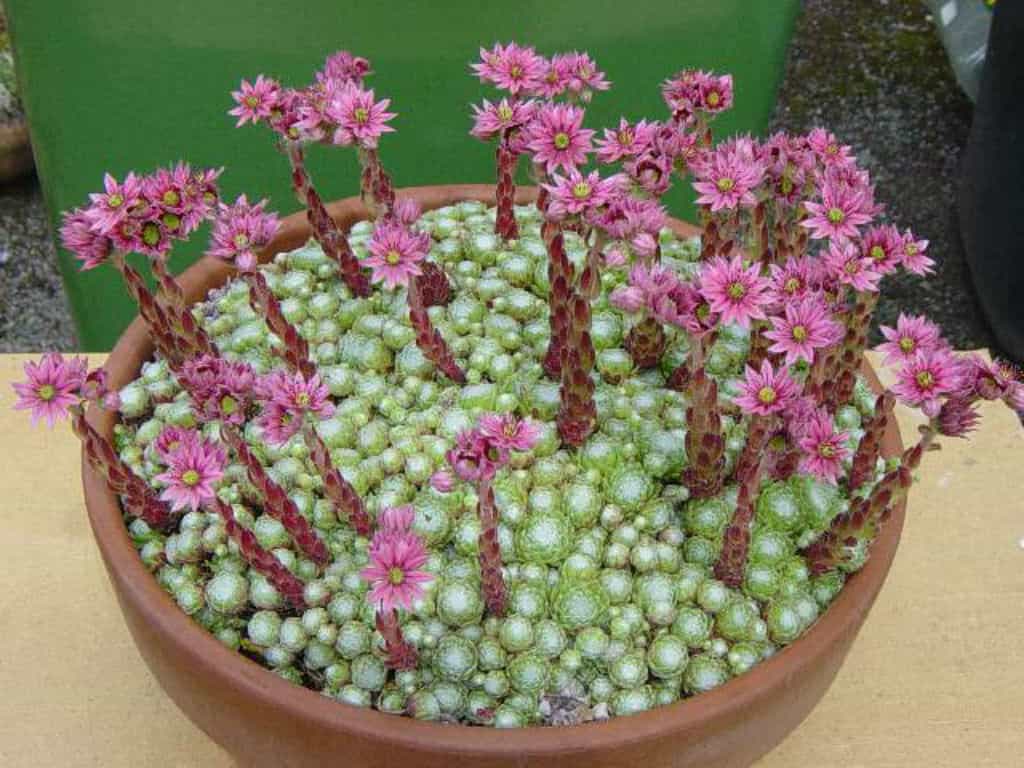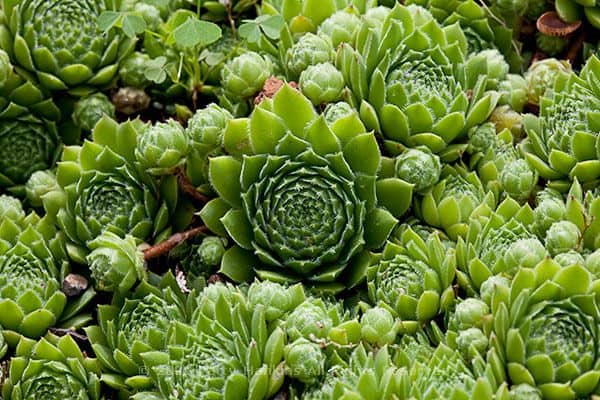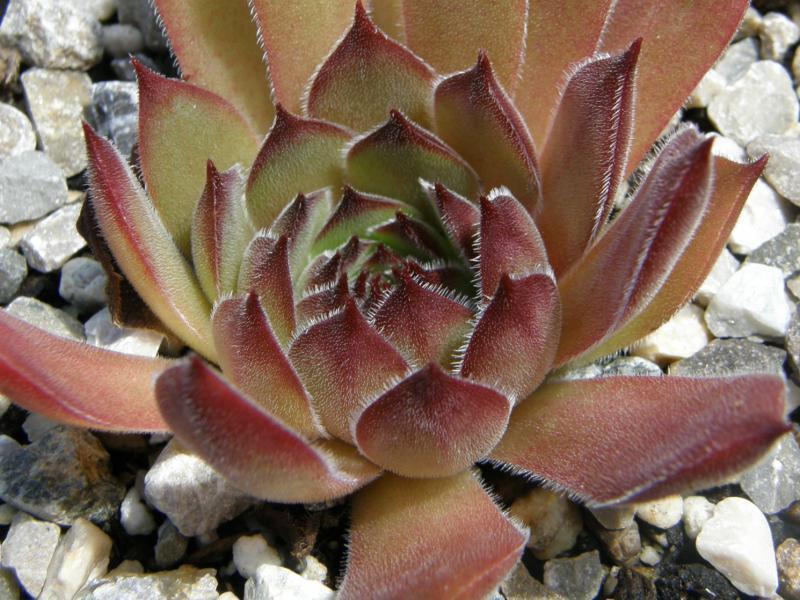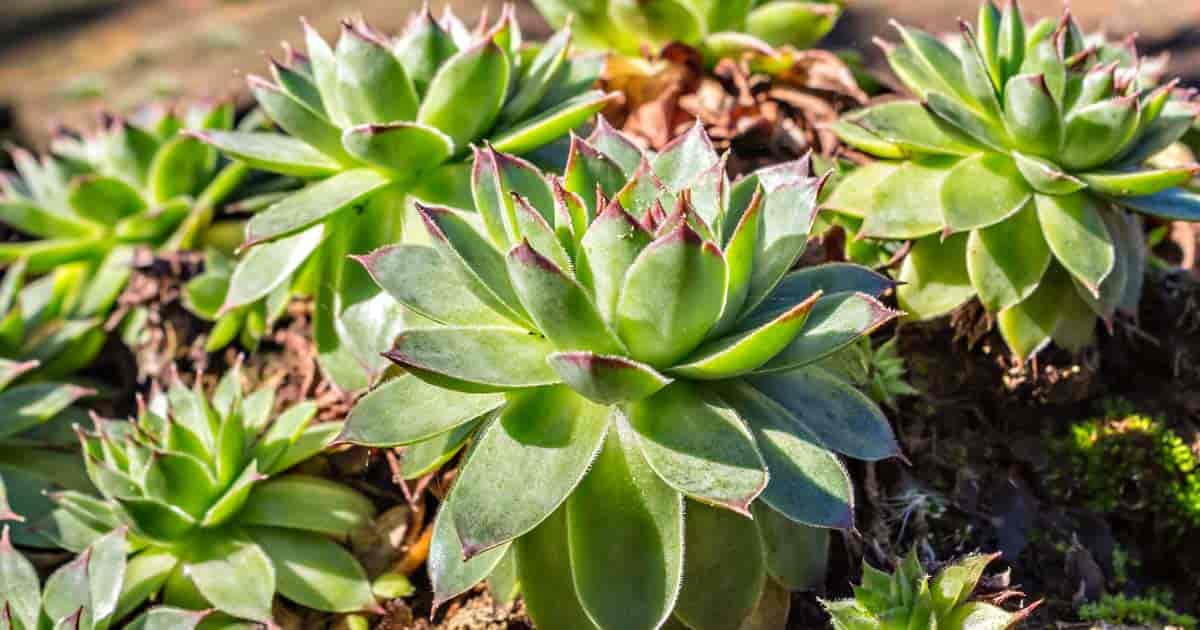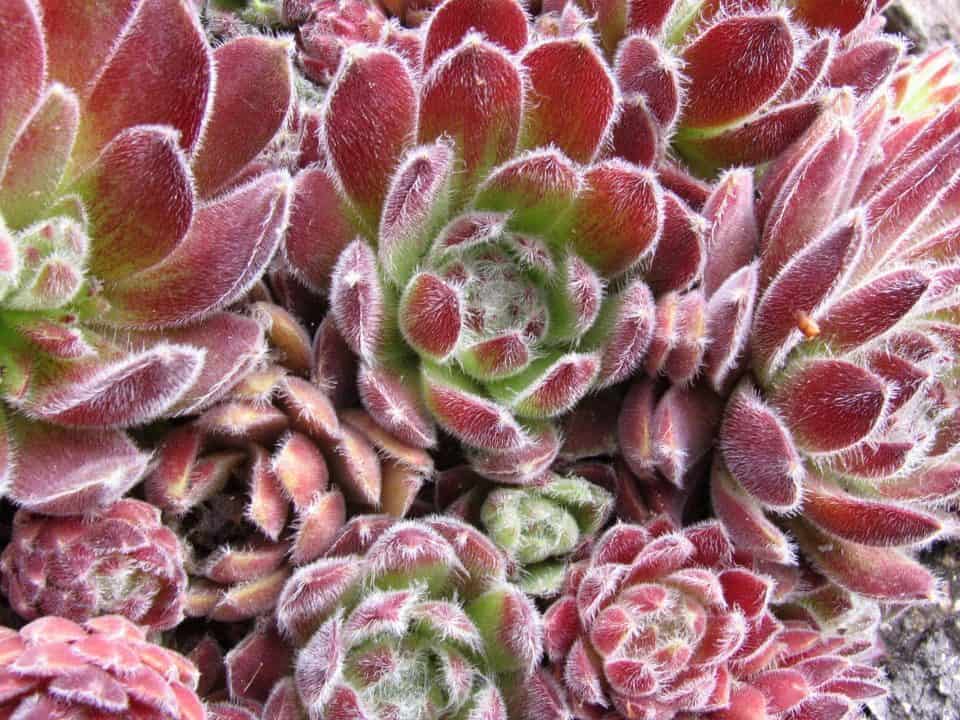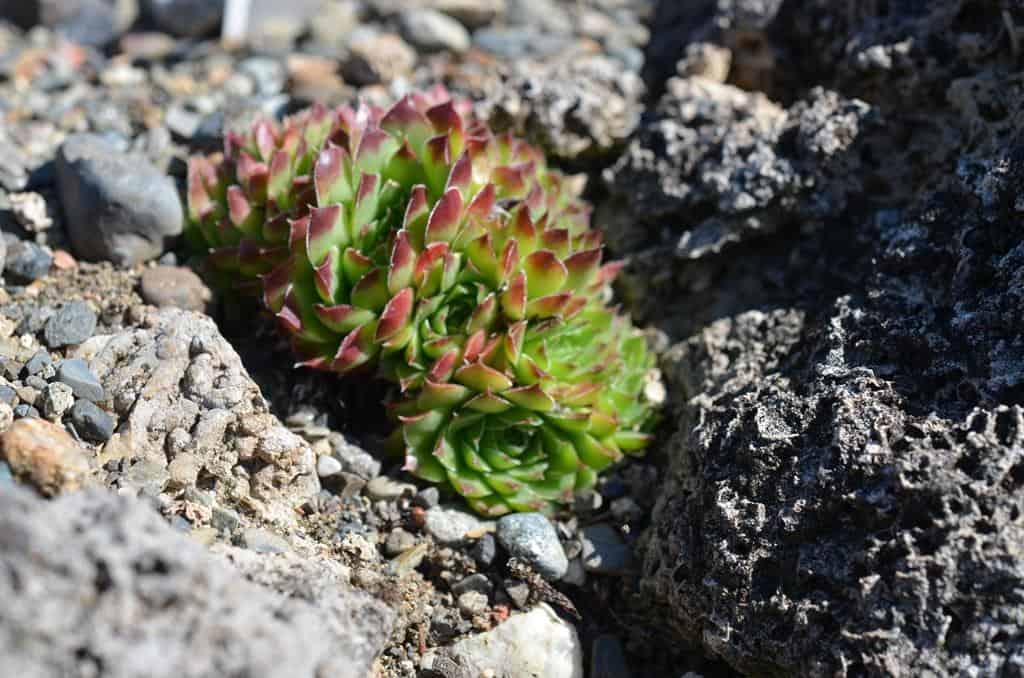Sempervivum spring beauty, or Hen and Chicks, are small houseplants that you will find in many gardens around the world. They are extremely popular due to their long-lasting beauty, easy care, and low maintenance requirements.
The spring season offers endless possibilities for seasonal color and interest in the garden with spring-flowering bulbs, hardy ferns, and of course evergreen perennials like sempervivum or hen and chicks (sempervivum tectorum).
These charming rosettes of succulent leaves form an attractive ground cover that can be used to complement other plants as well as make a statement all on its own.
Origin and distribution
Hen and chicks, which is also known as Sempervivum spring beauty succulent, is a perennial plant belonging to the Crassulaceae family. The plant is native to mountain areas of Eurasia such as Caucasus Mountains, Pyrenees, and the Alps. It grows in warm regions of the US like Colorado. It has become one of the popular garden plants due to its low care requirements and beautiful flowers that come out during the spring season.
It does not require much sunlight or water for growth. You can place it on a sunny windowsill for maximum growth but it will still thrive if you place it in a shady area with minimal sunlight. During winter months, it can be placed outside but make sure there are no hard freezes at night time or else they will die off completely.
Sempervivum spring beauty propagation
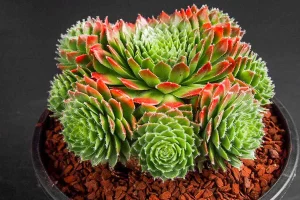
Sempervivum spring beauty is a member of the Crassulaceae family and it’s known for its ability to propagate fast. The usual way to propagate Sempervivum is by clipping, but you can also propagate it through division. In fact, if you want to keep your plant at home or in your garden looking exactly like it does now, propagation by division will be your best bet.
It’s an easy process that involves digging up clumps of plants and dividing them into smaller ones. This method is great because each new division will have its own root system, which means it won’t need as much water as a single plant would.
If you decide to divide your Sempervivum, make sure you do so in early spring while they are still dormant. This gives them time to establish themselves before summer comes around and their growth really kicks off.
Once you’ve divided your Sempervivum, put some soil over it and lightly water it until it settles in. Then, place them somewhere where they will get plenty of sunlight and room to grow. You can even use a little bit of fertilizer on top of the soil when you plant them, just don’t go overboard!
Sempervivum spring beauty care information
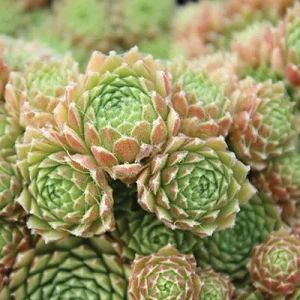
Sempervivum spring beauty should be grown in shallow, wide pots, allowing a lot of airflow around them. They like lots of sunlight but not intense heat. Water freely during spring, summer, and autumn but only moderately during winter.
They like to be kept evenly moist all year round so that their roots are never dry; if you have problems with snails it is a good idea to put some eggshells in your pots to keep them away from your plants.
Light requirement
Sempervivum spring beauty needs as much light as possible, but they are also very tolerant of low-light conditions. While many people like to keep them on a bright windowsill, they will do fine with indirect light from a bright doorway or hall. Just remember: The more light your Sempervivum gets, the more flowers it will produce!
Soil/potting mix
Hen-and-chick varieties like lots of sun, but they prefer light, well-drained soil. The addition of coarse sand or horticultural pumice to your potting mix will help improve drainage. Use a pH test kit if you’re concerned about pH level, as hen-and-chicks prefer slightly acidic soil.
If you use regular potting soil, add some peat moss to increase acidity. It is also important to water sempervivums moderately; too much water can cause root rot and kill off your plants. Overwatering is more common than underwatering with these succulents because they are so small.
Watering
Before planting, water thoroughly to be sure your container will not sit in soggy soil. You can tell if you’ve watered enough by picking up your container. It should feel very light.
After that initial watering, make sure to keep an eye on your sempervivum’s soil level. Semps like dry conditions, but they don’t want their roots to dry out completely! If you find that water is standing in their pot after a period of time, it’s time for another thorough watering.
Fertilizer
Fertilize in early spring. Use a low-nitrogen, slow-release fertilizer such as Osmocote. Apply 1 to 2 tablespoons per square foot. Scratch it into the top inch of soil with a hand trowel. Skip fall fertilizing; sempervivums need time to rest before winter dormancy. And be careful not to overfertilize; sempervivums are sensitive to nitrogen.
Temperature
Sempervivum thrives in temperatures of 60 to 70 degrees. Temperatures below 60 degrees will stunt their growth. Temperatures above 70 degrees can damage your Sempervivum plants, as well as cause them to drop their flowers early. The ideal temperature is between 60 and 70 degrees.
Sempervivum, or hen and chicks, likes well-drained soil that is kept moderately moist. If temperatures go below freezing, however, they must be brought inside for winter. While wintering indoors keep them out of drafty areas near windows where cold air can creep in.
Humidity
Too little moisture can cause Sempervivum to wilt and develop powdery mildew. Common sense suggests that air that is too dry is a bad thing for succulents, but what about air that’s too moist? Actually, it’s far more common for interior plants to be overwatered than underwater; if the water sits on leaves or in saucers for any length of time, fungi and bacteria will get started.
The ideal humidity range for Sempervivum spring beauty is between 40% and 60%. In areas with low humidity, use a humidifier to increase levels around your plants. If you have high humidity, try moving your plant outdoors during the summer months so it can benefit from lower levels of indoor moisture.
Pruning
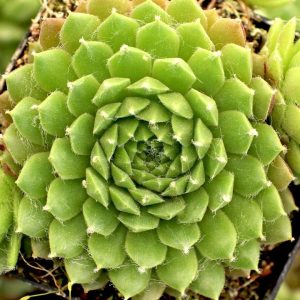
It’s tempting to leave your Sempervivum spring beauty alone in its plastic pots, but try to resist that temptation. It’s important to prune them regularly because they tend to grow back quickly, but make sure you never cut more than 10 percent of any one stem at a time. Otherwise, your plant will spend its energy making new stems instead of blooms.
It’s also important to prune off old flowers so they don’t sap energy from newer blooms. If your plants are in hanging baskets or window boxes, take care not to let them get too heavy with water; otherwise, they might fall over.
When to repot
It’s time to repot your Sempervivum spring beauty when it outgrows its current planter. They don’t mind getting crowded, but they do prefer a soil depth of at least three inches. Sempervivum thrives in moist soil, so you may need to water them more often than other houseplants. It’s important not to overwater them, though; otherwise, their leaves will turn yellow or brown and begin to drop off.
If watering is necessary, use room-temperature water instead of cold tap water. The roots can rot if exposed to temperatures below 55 degrees Fahrenheit for an extended period of time.
Dormancy
The dormant season for Sempervivum spring beauty is the winter. This flowering succulent grows best in areas that receive an average of eight hours of sunlight a day but have cool temperatures at night. Sempervivum spring beauty goes dormant in October and begin growing again in February or March, depending on where you live.
In warmer climates, they will stay in active growth for longer periods than those living in cooler areas. During dormancy, your plant will still need light to prevent them from losing its color. If you are going away during dormancy, be sure to bring your plants inside so they don’t lose too much color before spring arrives.
Sempervivum spring beauty flower & fragrance
Sempervivum spring beauty flowers have a sweet scent reminiscent of fresh-baked bread. One reason they are often associated with spring is that they also have a spring-like appearance, meaning small young green leaves that are generally displayed after snowmelt when there isn’t any other greenery around. Some people even call them hens and chicks because their rosettes of succulent leaves resemble little chicks.
Toxicity
Sempervivum spring beauty, which is also known as hen and chicks, has a reputation for being tough houseplants. This reputation is well-deserved: like any plant, sempervivums do not fare well around toxins such as pesticides or heavy metals.
In fact, these plants are so sensitive to pollutants that even normal amounts of calcium from hard water can be harmful to them. Water your plant only with distilled or filtered water, do not let tap water touch its roots.
USDA Hardiness Zones
Sempervivum spring beauty grows well in USDA hardiness zones 3 to 10. In cooler climates, they can be grown as an annual. They prefer full sun to partial shade and should be planted in well-drained soil that is kept evenly moist but not soggy. If you live in a warm climate, plant them directly into your garden or container after all danger of frost has passed.
Pests and diseases
Slugs, snails, aphids, mealybugs, and scales, all of these can destroy your Sempervivum spring beauty in one fell swoop. Fortunately for you, there are a number of organic pesticides that can keep pests at bay. Before treating your plants with any pesticide product, make sure it’s suitable for use on sempervivums.
Some products contain chemicals that will kill or harm these succulents. Organic products such as pyrethrum, neem oil, and horticultural oils are safe to use on all types of succulents including hens and chicks. You can purchase them online or from most garden centers.
Conclusion
In conclusion, Sempervivum spring beauty requires very little in terms of care or maintenance. They are hardy little plants that come in a wide variety of shapes, sizes, and colors.
The key to keeping them healthy is to be consistent with their care and place them in appropriate growing conditions. Make sure you remember to water your plants regularly so they don’t dry out.
